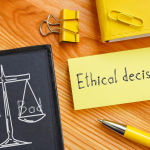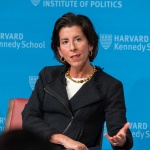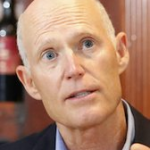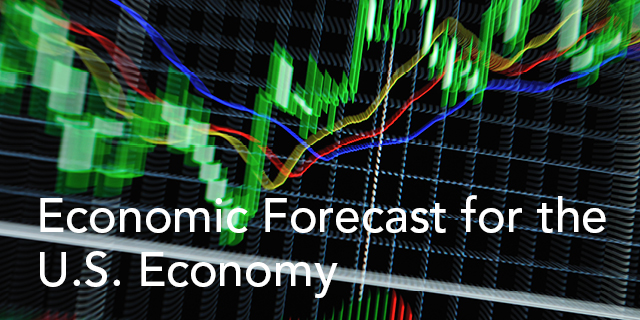The outlook for the U.S. economy remains a topic of intense scrutiny as ongoing factors signal potential turbulence ahead. Amid discussions of an economic recession, the implications of recent tariff policies appear to loom large over consumer sentiment and investor confidence. With the Federal Reserve considering adjustments to interest rates, the interplay between these elements highlights the delicate balance the economy must maintain. As the trade war effects unfold, many are left wondering how these developments will shape the financial landscape. Understanding the dynamics of these economic influences is crucial for both policymakers and citizens alike.
As analysts forecast future trends in American financial stability, the U.S. economy’s trajectory raises important questions about ongoing and emerging challenges. The specter of an impending economic downturn has led to widespread concerns regarding trade relations and their impact on household attitudes towards spending. A critical review of governmental policies, particularly tariffs, can shed light on the complexities affecting market performance and growth. Additionally, the Federal Reserve’s decisions regarding interest rate management will be pivotal in navigating these economic headwinds. Collectively, these aspects present a comprehensive view of the nation’s economic health and the strategies required to foster resilience amidst uncertainty.
Understanding the U.S. Economy Outlook
The U.S. economy is at a critical juncture with a looming uncertainty fueled primarily by the ongoing trade war and fluctuating Federal Reserve interest rates. Recent reports indicate that consumer sentiment has dipped to its lowest level since late 2022, posing significant concerns for policymakers. This decline mirrors heightened public anxiety regarding potential economic recession, as consumers exhibit caution in their spending patterns. Analysts warn that these factors could lead to a tightening of the economy, potentially causing a downturn if the challenges persist.
As the Federal Reserve deliberates on interest rate adjustments, the impacts of their decisions will resonate throughout the economy. If rate cuts are implemented, they could stimulate consumer spending and counteract the chilling effects of the trade war. However, maintaining higher rates, aimed at curbing inflation, might inadvertently stifle growth, particularly in vulnerable sectors affected by government policies. Thus, navigating these challenges will be vital for sustaining economic momentum and addressing consumer confidence.
Impact of Tariff Policy on Economic Stability
The recent imposition of tariffs has sparked concerns among economists regarding its broader implications for economic stability. Tariffs, often viewed as protective measures, can disrupt established trade relationships and lead to retaliatory actions from trading partners. For instance, recently implemented tariffs by China, Mexico, and Canada against U.S. goods have intensified fears of a prolonged trade conflict, which may hinder economic growth and minimize job creation. As businesses grapple with increased costs and potential price hikes, consumer sentiment naturally declines, creating a cycle that could propel the economy toward recession.
Critics of the current tariff policy argue that instead of bolstering American manufacturing and strengthening local industries, these measures could ultimately lead to higher consumer prices and eroded purchasing power. With the uncertainty surrounding tariffs impacting investment strategies and corporate spending, the potential for negative ripple effects could result in slower wage growth and reduced economic activity overall. Given the interconnected nature of the global economy, the repercussions of unyielding tariff strategies could extend far beyond the immediate market, challenging the very fabric of economic stability.
Assessing Consumer Sentiment Amid Economic Uncertainty
Consumer sentiment serves as an essential barometer for economic health, influencing spending behavior and business investment. Recent data from the University of Michigan’s consumer sentiment index highlights a worrying trend, as consumer confidence has plummeted to levels not seen since late 2022. Such a decline signifies worries about economic prospects fueled by escalating tariffs and uncertainty surrounding the Federal Reserve’s monetary policy. When consumer sentiment wanes, businesses often respond with caution, stymieing growth and innovation in the marketplace.
The correlation between consumer sentiment and economic performance cannot be overstated. A sustained decline in consumer confidence could prompt households to tighten their budgets, curtailing spending—a critical driver of economic growth. Moreover, as consumers grapple with economic volatility and rising prices due to tariffs, their purchasing behaviors could shift significantly, leading to adverse impacts on various sectors, from retail to housing. The interplay between consumer perceptions and economic realities will be a pivotal aspect of the U.S. economy’s trajectory in the coming months.
Trade War Effects on U.S. Economic Growth
The ongoing trade war has left a significant mark on the U.S. economy, exacerbating uncertainties and potentially stalling economic growth. As countries retaliate against U.S. tariffs, the repercussions ripple through supply chains and result in elevated costs for businesses and consumers alike. Many economists argue that this climate of unpredictability could hinder investment decisions, delaying crucial projects that would otherwise contribute to economic expansion. Should the trade tensions continue or escalate, they may precipitate a broader economic slowdown that challenges the targets set by policymakers.
Additionally, the trade war’s influence extends beyond immediate financial constraints, affecting long-term growth prospects. Companies grappling with tariffs may be hesitant to expand, hire new talent, or adapt their strategies to foster innovation. The resulting hesitation may undermine productivity gains, which are essential for sustaining positive economic momentum. Consequently, as the trade war continues to shape the landscape, the overarching effects could stall economic growth and risk tipping the economy into recession.
Federal Reserve Interest Rates: A Balancing Act
The Federal Reserve finds itself navigating a complex economic landscape characterized by competing pressures from inflation and growth. Interest rate decisions play a pivotal role in shaping the economy’s direction, yet the current environment presents challenges that require careful consideration. On one hand, sustained high inflation necessitates caution, as increasing rates can stymie expenditures and potentially lead to economic contraction. Conversely, a cut in rates aimed at stimulating growth may risk exacerbating inflationary pressures stemming from an unpredictable trade policy.
As the Federal Reserve assesses its options, the implications of interest rate adjustments become increasingly consequential. Should the central bank choose to maintain current rates in response to inflation fears, it could prioritize price stability over growth, potentially resulting in slower economic recovery. Alternatively, an aggressive approach to rate cuts might provide immediate relief to consumers and businesses but could simultaneously ignite inflationary pressures further. Striking the right balance will be crucial as the economy wrestles with uncertainties and seeks a stable path forward.
Long-term Economic Growth: Challenges Ahead
Looking ahead, the potential for long-term economic growth faces numerous challenges exacerbated by recent political and economic decisions. Economic conditions today are marked by increasing uncertainty surrounding fiscal policies, trade agreements, and geopolitical tensions. Analysts caution that if the current tariff regime continues, it may undermine America’s competitive position in global markets, further impeding long-term growth prospects and fostering an environment of recession fears and stagnation.
Addressing these challenges requires a multifaceted approach that encompasses strategic investments in infrastructure, innovation, and workforce training. By fostering a more resilient economic framework capable of adapting to external shocks, the U.S. could better navigate the ramifications of current policies. As businesses and consumers remain wary of the impending economic landscape, proactive measures to foster growth and restore confidence will be imperative in achieving sustainable economic development.
Preparing for Possible Economic Recession
As signals of an impending recession begin to surface, it’s imperative for businesses and consumers alike to prepare for potential economic downturns. Key indicators suggest that conditions are ripe for a recession, with concerns about consumer spending, job growth, and overall economic stability growing. The recent increase in tariffs and the uncertainty surrounding the Federal Reserve’s interest rate decisions underscores the chaotic climate that could precipitate negative economic outcomes in the near future.
In light of these challenges, individuals and businesses should consider reassessing their financial strategies to mitigate risks associated with a potential recession. This may involve exploring cost-saving measures, diversifying investments, or prioritizing savings to weather economic fluctuations. By adopting a proactive approach, stakeholders can position themselves to better navigate the challenges posed by a volatile economy and safeguard their financial well-being in uncertain times.
The Role of Government Spending in Economic Recovery
Government spending plays a pivotal role in shaping economic recovery strategies, particularly during times marked by recession threats and economic uncertainty. Strategic investments in infrastructure, education, and healthcare can invigorate growth and create jobs while simultaneously boosting consumer confidence. The current economic landscape underscores the importance of responsible fiscal policies that promote stability and recovery without causing excessive inflationary pressures or increasing debt burdens.
Moreover, effective government spending must be balanced with ensuring long-term fiscal sustainability. Policymakers should evaluate the effectiveness of spending programs and their impact on the overall economy. While immediate interventions might be necessary to combat recessionary pressures, an eye towards future solvency and responsible budgeting will be essential in achieving a more resilient economic framework. In navigating these dynamics, the administration’s approach to spending can significantly influence future economic trajectories.
Navigating Global Trade Dynamics and Economic Policies
In an increasingly interconnected global economy, navigating trade dynamics and economic policies has become imperative for sustained growth. Recent tariff implementations have reshaped trade relationships, creating risk and uncertainty for industries reliant on global supply chains. Policymakers face the challenge of balancing trade interests with domestic economic stability, mindful that erratic trade policies can herald economic volatility, affecting everything from consumer prices to job creation.
To foster a more robust economic climate, policymakers must consider the broader implications of their trade strategies. Engaging in fair trade practices and forging partnerships that prioritize mutual benefits can bolster domestic industries without inciting retaliatory measures. As the global framework continues to evolve, a strategic approach to trade and economic policies will be essential for ensuring the U.S. economy remains competitive and resilient in an uncertain world.
Frequently Asked Questions
What is the current U.S. economy outlook regarding a potential recession?
The current U.S. economy outlook indicates an increased likelihood of a recession within the next year, primarily driven by concerns over the ongoing trade war, decreasing consumer sentiment, and unstable stock market conditions.
How might the Federal Reserve interest rates impact the U.S. economy outlook?
The Federal Reserve’s interest rate decisions significantly impact the U.S. economy outlook. While rate cuts can stimulate economic growth and boost job creation, maintaining higher rates may be necessary to control inflation amidst uncertainty caused by tariffs and other economic factors.
What role do trade war effects play in the U.S. economy outlook?
Trade war effects are a central concern in the U.S. economy outlook, as retaliatory tariffs imposed by countries like China, Mexico, and Canada could lead to reduced exports, increased prices for consumers, and potential job losses in affected industries.
How does consumer sentiment influence the U.S. economy outlook?
Consumer sentiment is crucial to the U.S. economy outlook; a decline in this index, which has reached its lowest level since November 2022, often reflects decreased consumer confidence, potentially leading to reduced spending and economic slowdown.
What are the potential consequences of current tariff policies on the U.S. economy outlook?
Current tariff policies could have detrimental consequences for the U.S. economy outlook, including increased costs for manufacturers, disrupted supply chains, and diminished investor confidence, which raises the risk of a recession.
| Key Point | Details |
|---|---|
| Recession Risks | Increased risk of recession due to escalating trade war and market instability. |
| Consumer Sentiment | University of Michigan’s consumer sentiment index has dropped to its lowest since November 2022. |
| Tariff Policy Impact | Economists generally oppose tariffs; they believe current policies harm investment and confidence. |
| Federal Reserve’s Dilemma | Fed must choose between supporting the economy with rate cuts or controlling inflation by maintaining rates. |
| Market Reactions | Markets reacted negatively to tariffs imposed by China, Mexico, and Canada, reflecting fears of prolonged conflict. |
| Long-Term Outlook | If uncertainty continues, it may significantly hurt employment and lead to an economic downturn. |
Summary
The U.S. Economy Outlook is increasingly concerning, marked by falling consumer confidence and rising risks of a recession. Factors such as the ongoing trade war and market fluctuations are fueling uncertainty among investors and industries alike. The challenges posed by the current tariff policies and the Federal Reserve’s conflicting choices on interest rates further complicate the economic landscape. As the situation evolves, maintaining stability and fostering growth will be critical to navigating these turbulent times.







